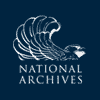John Stewart to Benjamin Franklin, 21 November 1777
From John Stewart9
ALS: American Philosophical Society
London 21st. Novemr 1777
Sir
Having formerly had the honor of your acquaintance whilst you resided amongst us in London, I take the liberty of addressing a few lines to you (not on the subject of Politics, for in that we unfortunately differ) but as a Philanthropist, who is always ready to give every relief in his power to his fellow creatures in all cases of distress.
In one of our Newspapers of this week it is asserted that you had reccomended the use of Tobacco ashes to the Physicians at Paris in the cases of an Ascites, an Anasarca, an Oedema and every Species of Hydropical Complaint, That they in consequence had made many Experiments and that all of them had been followed by a Surprizing and Speedy cure.1 Now Sir, as I have been for several months troubled with Oedematous Complaints which of late seem inclinable to grow into an Anasarca I should be glad to know if there be any truth in this Article of News, and if true, what proportion of these ashes goes to a dose and how often to be taken in the twenty four hours, for hitherto all the Prescriptions of our most eminent Physicians have proved ineffectuall, tho’ I must at the same time in justice say that Dr. Dominicetti at Chelsea tho’ reckoned a Quack has given me some relief and diminished the most alarming Symptoms by his fumigating Baths in the short Tryal I have given him lately.2
Your Answer directed to me at my old place of Abode in Buckingham Street, York Buildings will be esteemed a very particular favor, by one who is very respectfully Sir Your most obedient humble Servant
John Stewart
Addressed: To / Dr Franklyn / Paris
Notation: John Stewart London
9. A London merchant (c. 1723–81), who had been an M.P. and active in the affairs of the East India Co. and was now in reduced circumstances. Namier and Brooke, House of Commons, III, 480–1. BF doubtless met him through Caleb Whitefoord, who had been close to Stewart’s father: W.A.S. Hewins, ed., The Whitefoord Papers . . . (Oxford, 1898), pp. XXI, 122–3, 128.
1. Ascites and anasarca are forms of edema or dropsy in the abdominal region. We have not located the newspaper passage that Stewart had seen, but it derived from an article in the Cumberland Chron. and Whitehaven Public Advertiser of March 28, 1777. BF had communicated to the Parisian medical faculty, the article said, the potentiality of tobacco ash for curing dropsy; the royal physicians had tried it on two patients with most happy results. J. Bennett Nolan, “A British Editor Reports the American Revolution,” PMHB, LXXX (1956), 105. This announcement, when it appeared in the London press, was picked up in France and the Netherlands, and within the next few years BF received more than a dozen inquiries like this one. The initial report, needless to say, had no basis in fact.
2. Bartholomew di Dominiceti had published some years before A Plan for Extending the Use of Artificial Water Baths, Pumps, Vaporous and Dry-Baths, Fumigations, and Frictions . . . (Chelsea, 1771), and had recently defended his methods by contributing case histories to Lloyd’s Evening Post and British Chron.

![University of Virginia Press [link will open in a new window] University of Virginia Press](/lib/media/rotunda-white-on-blue.png)
